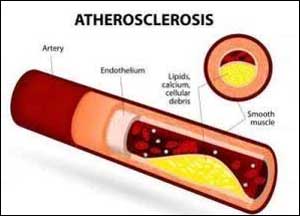- Home
- Editorial
- News
- Practice Guidelines
- Anesthesiology Guidelines
- Cancer Guidelines
- Cardiac Sciences Guidelines
- Critical Care Guidelines
- Dentistry Guidelines
- Dermatology Guidelines
- Diabetes and Endo Guidelines
- Diagnostics Guidelines
- ENT Guidelines
- Featured Practice Guidelines
- Gastroenterology Guidelines
- Geriatrics Guidelines
- Medicine Guidelines
- Nephrology Guidelines
- Neurosciences Guidelines
- Obs and Gynae Guidelines
- Ophthalmology Guidelines
- Orthopaedics Guidelines
- Paediatrics Guidelines
- Psychiatry Guidelines
- Pulmonology Guidelines
- Radiology Guidelines
- Surgery Guidelines
- Urology Guidelines
How to accurately Predict Subclinical Atherosclerosis in Low-Risk Individuals ?

The established ideal cardiovascular health score (ICHS) and the new Fuster-BEWAT score (FBS) predict the presence and extent of subclinical atherosclerosis with similar accuracy. Simpler tools like Fuster-BEWAT (blood pressure [B], exercise [E], weight [W], alimentation [A], and tobacco [T]) score (FBS), does not require laboratory tests.The findings have been published in the Journal of the American College of Cardiology.
Juan Miguel Fernandez-Alvira, PhD, et al. conducted the study to compare the effectiveness of ICHS and FBS in predicting the presence and extent of subclinical atherosclerosis.
The investigators enrolled a total of 3,983 participants 40 to 54 years of age in the PESA (Progression of Early Subclinical Atherosclerosis) cohort. Subclinical atherosclerosis was measured in right and left carotids, abdominal aorta, right and left iliofemoral arteries, and coronary arteries. Subjects were classified as having poor, intermediate, or ideal cardiovascular health based on the number of favorable ICHS or FBS.
The researchers found that with poor ICHS and FBS as references, individuals with ideal ICHS and FBS showed lower adjusted odds of having atherosclerotic plaques (ICHS odds ratio [OR]: 0.41; 95% confidence interval [CI]: 0.31 to 0.55 vs. FBS OR: 0.49; 95% CI: 0.36 to 0.66), coronary artery calcium (CACS) ≥1 (CACS OR: 0.41; 95% CI: 0.28 to 0.60 vs. CACS OR: 0.53; 95% CI: 0.38 to 0.74), higher number of affected territories (OR: 0.32; 95% CI: 0.26 to 0.41 vs. OR: 0.39; 95% CI: 0.31 to 0.50), and higher CACS level (OR: 0.40; 95% CI: 0.28 to 0.58 vs. OR: 0.52; 95% CI: 0.38 to 0.72). Similar levels of significantly discriminating accuracy were found for ICHS and FBS with respect to the presence of plaques (C-statistic: 0.694; 95% CI: 0.678 to 0.711 vs. 0.692; 95% CI: 0.676 to 0.709, respectively) and for CACS ≥1 (C-statistic: 0.782; 95% CI: 0.765 to 0.800 vs. 0.780; 95% CI: 0.762 to 0.798, respectively).
Area under the curve (AUC) analyses found similar accuracy of ICHS and FBS for predicting the presence of plaque or CACS ≥1 and generalized subclinical atherosclerosis.
It was concluded that both scores predict the presence and extent of subclinical atherosclerosis with similar accuracy, highlighting the value of the FBS as a simpler and more affordable score for evaluating the risk of subclinical disease.The results of these analyses demonstrate good and comparable predictive values with both scores for all outcomes in this cohort. "While the ICHS and the FBS show a similar predictive value for detecting subclinical disease, the FBS is simpler and does not need laboratory results. Therefore, it may be considered as the first option in settings where access to laboratory analysis is limited," the investigators concluded.
For more details click on the link: DOI: 10.1016/j.jacc.2017.09.032

Disclaimer: This site is primarily intended for healthcare professionals. Any content/information on this website does not replace the advice of medical and/or health professionals and should not be construed as medical/diagnostic advice/endorsement or prescription. Use of this site is subject to our terms of use, privacy policy, advertisement policy. © 2020 Minerva Medical Treatment Pvt Ltd